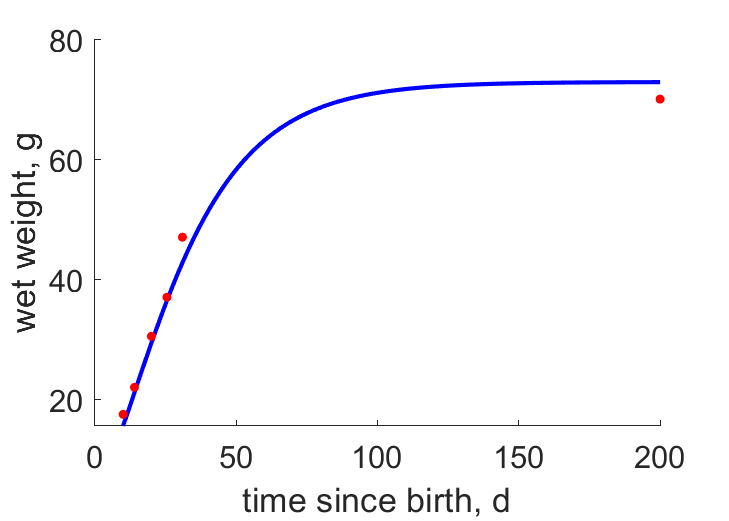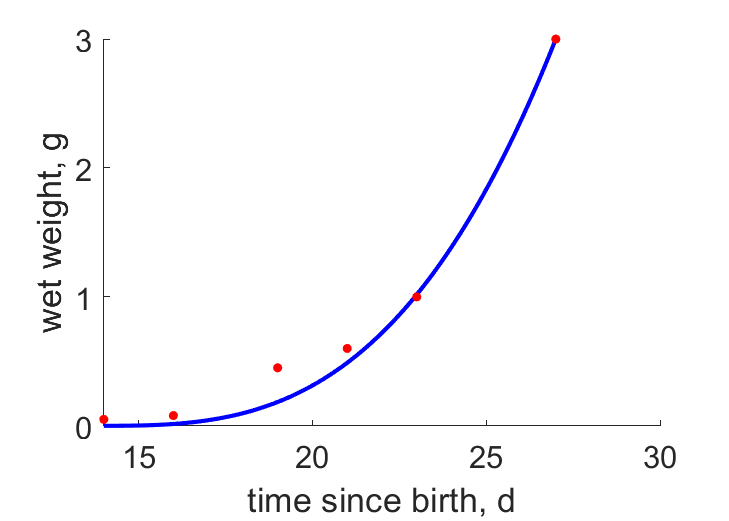Predictions & Data for this entry
| Model: stx | climate: BSk, Csa, Cfb, Csb | migrate: | phylum: |
| COMPLETE = 2.8 | ecozone: THp | food: bxM, xiCi | class: |
| MRE = 0.053 | habitat: 0iTf | gender: Dg | order: |
| SMSE = 0.009 | embryo: Tv | reprod: O | family: |
Zero-variate data
| Data | Observed | Predicted | (RE) | Unit | Description | Reference |
|---|---|---|---|---|---|---|
| tg | 28 | 21.34 | (0.2379) | d | gestation time | BarrZuri2004 |
| tx | 31 | 30.94 | (0.001821) | d | time since birth at weaning | BarrZuri2004 |
| tp | 182 | 174.9 | (0.03908) | d | time since birth at puberty | BarrZuri2004 |
| am | 2190 | 2193 | (0.001332) | d | life span | BarrZuri2004 |
| Wwb | 4 | 4.057 | (0.01414) | g | wet weight at birth | BarrZuri2004 |
| Wwi | 70.5 | 72.85 | (0.0334) | g | ultimate wet weight | BarrZuri2004 |
| Ri | 0.009041 | 0.008967 | (0.00821) | #/d | maximum reprod rate | BarrZuri2004 |
Uni- and bivariate data
| Data | Figure | Independent variable | Dependent variable | (RE) | Reference |
|---|---|---|---|---|---|
| tW |  | time since birth | wet weight | (0.0514) | BarrZuri2004 |
| tWe |  | time since birth | wet weight | (0.09845) | BarrZuri2004 |
Pseudo-data at Tref = 20°C
| Data | Generalised animal | Talpa occidentalis | Unit | Description |
|---|---|---|---|---|
| v | 0.02 | 0.0526 | cm/d | energy conductance |
| p_M | 18 | 1133 | J/d.cm^3 | vol-spec som maint |
| k_J | 0.002 | 0.002 | 1/d | maturity maint rate coefficient |
| k | 0.3 | 0.01382 | - | maintenance ratio |
| kap | 0.8 | 0.9716 | - | allocation fraction to soma |
| kap_G | 0.8 | 0.8017 | - | growth efficiency |
| kap_R | 0.95 | 0.95 | - | reproduction efficiency |
Facts
- Moles are unique among mammals because all females of the 4 investigated species (Talpa occidentalis, T. europaea, T. romana, and T. stankovici) have ovotestes instead of simply ovaries (Ref: BarrZuri2004)
Bibliography